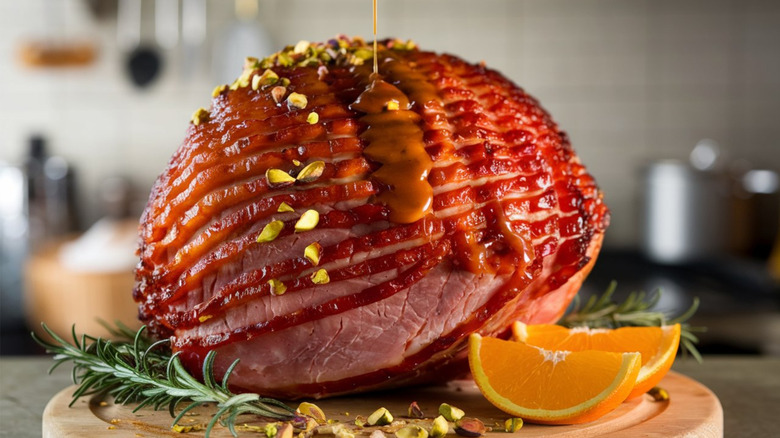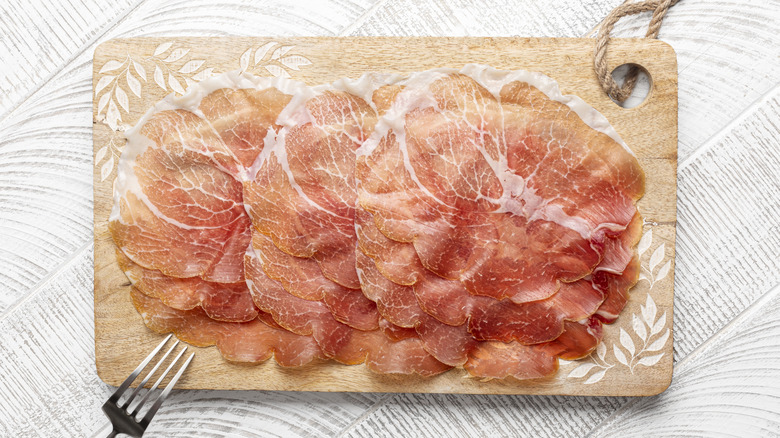How Does Prosciutto Differ From Ham, Anyway?
If there is anything to be learned from the difference between chicharrones and pork rinds, it's that pork is a complex protein. There is an overwhelming variety of flavors and textures that can be created depending on the pork cut, preparation method, and seasonings involved. Even iterations that seem simple, like ham, can be more nuanced than first impressions might indicate. Things get even more complicated when very specific pork products like prosciutto come into play. Just as all squares are rectangles but not all rectangles are squares, all prosciutto is considered ham but not all ham is prosciutto.
The key thing to remember is that in Italian, the word "prosciutto" translates to ham generally. However, in most other contexts, "prosciutto" refers to a specific type of ham that is salted and air-cured. As with other varieties of ham, the differences in flavors and methods of consumption come down to how the ham is produced.
The many types of ham
If it's made from a pig's leg, it's ham. The umbrella category of ham comprises different varieties that don't have to be cured, seasoned, or smoked in the same way. Speck ham, for example, is prepared through a smoking and aging process. Its natural flavor is strengthened by spices like juniper and bay leaves that are laced into it well before the smoking and aging process.
Both country ham and jamón serrano are made with a dry-curing process, but while the former is also commonly smoked, the latter takes on a unique flavor from the indigenous Spanish pigs it is produced from. Country ham sports a rich flavor that can be enjoyed whether it's pan-fried or featured on a charcuterie board. Jamón serrano, on the other hand, sports a more unique and complex flavor best enjoyed on its own or with charcuterie. City ham is the spiral-cut ham often enjoyed with holiday dinners. Produced through a brining process, it's known for its juiciness and tenderness. Considering the range of flavors and textures, of course there's a wine pairing for every type of ham.
What you need to know to be a prosciutto pro
Yes, prosciutto is a variety of ham, but it is also an Italian specialty with internal variations of its own. From the Carnic Alps to the Panaro River valley, anything made of only the pig's hind leg and salt is known as prosciutto. The dry-curing, salting, and aging process can take anywhere from three months to three years.
While there is a variety of Italian prosciutto, the most dominant in the international ham market is prosciutto di Parma, produced in Parma, Italy. This variety is usually aged for about one to three years, it's eaten on its own, and will get drier, darker, and more flavorful as it ages. Other Italian varieties of prosciutto include: prosciutto crudo, prosciutto cotto, culatello, prosciutto di San Daniele, prosciutto Toscano, and prosciutto di Modena DOP. Prosciutto is also produced in the United States and Spain.
Many ham varieties produced across Italy will even bear a Protected Designation of Origin seal as certification of its authenticity. To enjoy prosciutto like Italians in the peak of summer, wrap it around a wedge of cantaloupe and let the refreshing sweetness flow. Of course, a thoughtfully curated charcuterie board worth its salt almost always features prosciutto and a perfectly-paired cheese.


